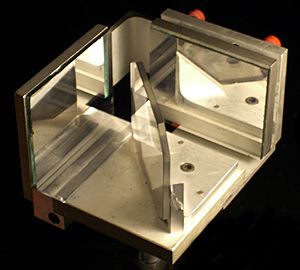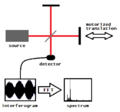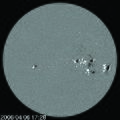Michelson interferometer facts for kids
The Michelson interferometer is a special scientific tool. It uses light waves to measure tiny distances very accurately. Scientists use it to study light and how it behaves.
Contents
Who Invented It?
The Michelson interferometer was invented by Albert Abraham Michelson. He was a famous scientist. Michelson is well-known for an important experiment. This experiment, called the Michelson–Morley experiment, helped show that something called "luminiferous aether" did not exist. People used to think this aether was needed for light to travel through space.
How a Michelson Interferometer Works
A Michelson interferometer has a few key parts:
- Two mirrors: One mirror stays still, and the other can move a tiny bit. A special tool called a micrometer helps move it very precisely.
- A beam splitter: This is a special mirror that splits a light beam into two parts.
- A screen: This is where you see the results.
Here is how it works step-by-step:
- First, a wide beam of laser light or other light is aimed at the beam splitter.
- When the light hits the beam splitter, it splits into two separate beams.
- One part of the light beam reflects towards the first mirror (Mirror 1).
- The other part of the light beam goes through the beam splitter towards the second mirror (Mirror 2).
- Both light beams then bounce off their mirrors and travel back to the beam splitter.
- At the beam splitter, the two light beams combine again.
- When they combine, they create a special pattern on the screen. This pattern is called an interference pattern.
What is an Interference Pattern?
The interference pattern looks like a series of bright and dark bands or rings. These bands appear because of how light waves combine.
- When the "crests" (highest points) of two light waves meet, they add up. This makes a brighter spot, called constructive interference.
- When a crest of one wave meets a "trough" (lowest point) of another wave, they cancel each other out. This makes a darker spot, called destructive interference.
By looking at these bands, scientists can measure the wavelength of the light. They can also measure very small changes in distance. If the movable mirror moves, the pattern of bands will shift. Each shift of one band means the mirror moved half a wavelength of the light.
Images for kids
See also
 In Spanish: Interferómetro de Michelson para niños
In Spanish: Interferómetro de Michelson para niños








